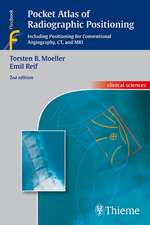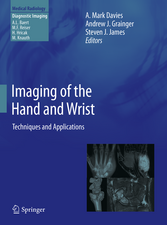Biological Radiation Effects
Autor Jürgen Kieferen Limba Engleză Paperback – 25 ian 1990
Preț: 397.76 lei
Nou
Puncte Express: 597
Preț estimativ în valută:
76.12€ • 79.18$ • 62.84£
76.12€ • 79.18$ • 62.84£
Carte tipărită la comandă
Livrare economică 14-28 aprilie
Preluare comenzi: 021 569.72.76
Specificații
ISBN-13: 9783540510895
ISBN-10: 3540510893
Pagini: 464
Ilustrații: XVII, 444 p.
Dimensiuni: 155 x 235 x 24 mm
Greutate: 0.64 kg
Ediția:Softcover reprint of the original 1st ed. 1990
Editura: Springer Berlin, Heidelberg
Colecția Springer
Locul publicării:Berlin, Heidelberg, Germany
ISBN-10: 3540510893
Pagini: 464
Ilustrații: XVII, 444 p.
Dimensiuni: 155 x 235 x 24 mm
Greutate: 0.64 kg
Ediția:Softcover reprint of the original 1st ed. 1990
Editura: Springer Berlin, Heidelberg
Colecția Springer
Locul publicării:Berlin, Heidelberg, Germany
Public țintă
Lower undergraduateCuprins
1 Types of Radiation: Characterization and Sources.- 1.1 Types of Radiation.- 1.2 Emission Spectra.- 1.3 Radiation Sources.- 1.4 Radioactivity.- 2 Fundamentals of Radiation Attenuation in Matter.- 2.1 Interaction Cross Section.- 2.2 Collision Processes.- 3 Interaction Processes.- 3.1 Optical Radiation.- 3.2 Ionizing Radiation.- 4 Deposition of Radiation Energy.- 4.1 General Aspects.- 4.2 Ionizing Radiation.- 4.3 Dosimetry of Optical Radiation.- 5 Elements of Photo- and Radiation Chemistry.- 5.1 Photochemistry.- 5.2 Radiation Chemistry.- 6 Photo- and Radiation Chemistry of DNA.- 6.1 Photochemical Alterations.- 6.2 Radiation Chemistry of DNA.- 7 Radiation Effects on Subcellular Systems.- 7.1 Target Theory.- 7.2 Gene Mapping.- 7.3 Viruses, Plasmids, Transforming DNA, and Vectors.- 8 Loss of Reproductive Ability in Cells.- 8.1 Survival Curves.- 8.2 Radiation Sensitivity and Nuclear Parameters.- 8.3 Radiation Quality.- 9 Radiosensitization and Protection.- 9.1 Photosensitization.- 9.2 Sensitization and Protection with Ionizing Radiation.- 10 Radiation and the Cell Cycle.- 10.1 Radiation Sensitivity as a Function of Cell Cycle Stage.- 10.2 Progression and Division Delay.- 10.3 DNA Synthesis.- 11 Chromosome Aberrations.- 12 Mutation and Transformation.- 12.1 Mutation Types and Test Procedures.- 12.2 Mutation Induction in Microorganisms.- 12.3 Mutation Induction in Mammalian Cells.- 12.4 Comparison of Radiation-induced Mutations in Different Systems.- 12.5 Molecular Aspects of Radiation-induced Mutagenesis in Cells.- 12.6 Neoplastic Transformation in vitro.- 13 Repair and Recovery.- 13.1 General Aspects and Definitions.- 13.2 Specific Repair Processes.- 13.3 Recovery.- 13.4 Genetic Dependence of Repair Processes.- 14 Modifications of Radiation Effects by External Influences.- 14.1 General Aspects.- 14.2 The Time Factor in Radiation Biology.- 14.3 Temperature.- 14.4 Chemicals.- 14.5 Tonicity.- 15 Special Aspects of Cellular Radiation Action.- 15.1 Near Ultraviolet and Visible Light.- 15.2 Other Types of Radiation.- 15.3 Incorporated Radionuclides.- 15.4 Radiomimetics.- 16 Theoretical Models of Cellular Radiation Action.- 16.1 Target Theory.- 16.2 The Two-Lesion-Model (Neary 1965).- 16.3 Theories Based on Microdosimetric Considerations.- 16.4 The “Molecular Theory”.- 16.5 Track Structure and Action Cross Sections.- 16.6 Repair Models.- 16.7 Comparisons.- 17 Cell Survival in Relation to Whole Body Effects.- 17.1 General Aspects.- 17.2 Renewal Systems.- 17.3 Cell Survival in vivo.- 18 Acute Radiation Damage.- 18.1 General Aspects.- 18.2 Skin.- 18.3 Eye.- 18.4 Radiation Syndromes and Lethality.- 18.5 Course and Therapy of Radiation Sickness.- 18.6 Radiation Hormesis.- 19 Radiation Effects and Progeny.- 19.0 Preliminary Remarks.- 19.1 Fertility.- 19.2 Prenatal Radiation Effects on the Embryo.- 19.3 Genetic Effects.- 20 Late Somatic Effects.- 20.1 Eye Cataracts.- 20.2 Radiation-induced Life-shortening.- 20.3 Cancerogenesis.- 21 Effects of Internal Exposure.- 21.1 Uptake and Distribution of Radionuclides.- 21.2 Dose Estimates.- 21.3 Special Actions.- 21.4 Conclusions.- 22 Radioecology.- 22.1 General Aspects.- 22.2 Optical Radiation.- 22.3 Ionizing Radiation.- 23 Principles of Radiation Protection Regulations.- 23.1 Ionizing Radiation.- 23.2 Optical Radiation.- 24 Radiobiology in Radiation Therapy.- 24.1 Phototherapy.- 24.2 Tumour Therapy by Ionizing Radiation.- 24.3 Modifications and New Modalities in Radiation Therapy.- Mathematical — Physical Relations.- I.1 Polar Coordinates.- I.2 Mean Pathlength in a Sphere.- I.3 The “KEPLER Problem”.-I.4 Statistical Distributions. The POISSON Distribution.- I.5 LAPLACE Transforms.- I.6 Probit Transformation.- I.7 Reaction Kinetics.- Appendix II.- Biological Background.- II.1 Structure and Properties of the Genetic Material.- I1.2 Replication of DNA.- II.3 Information Processing.- II.4 The Cell Division Cycle.- I1.5 Gene Cloning.- References.








